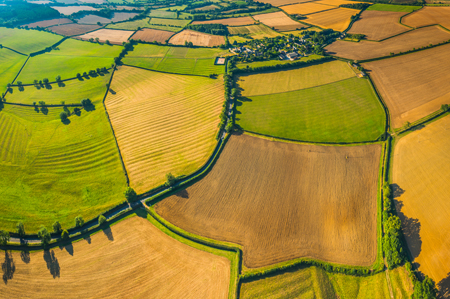Column: Prevented Acres Do Not Guarantee a Certain Cut to U.S. Crop Plantings
Category: Grains

(Reuters) – The excessively wet weather in the United States this spring may have constructed a historically large barrier to corn and soybean plantings, but the actual acres sown could be higher than prevented planting claims might suggest.
Prevented planting (PP) coverage protects U.S. farmers if they are unable to plant an insured crop by a predetermined date. According to the U.S. government’s Risk Management Agency, PP payments compensate producers for the costs generally incurred in preparation for planting if adverse weather is prohibitive.
Many market analysts believe that 2019 PP acres will be record high after too much rainfall led to one of the slowest planting seasons ever. PP history goes back to the 1996 harvest, and the greatest total acres ever claimed in one season was 9.6 million in 2011.
However, the actual acres planted and harvested will be much more important for U.S. corn and soybean production than PP acres, and that should not be forgotten.
On Wednesday, advisory service Pro Farmer said “usually reliable sources” suggest that PP acres for corn were between 7 million and 8 million acres as of early July, while soybean PP acres were between 2 million and 3 million. That would put all crop PP at 12.5 million acres, with sources suggesting that number will go even higher.
Earlier this month, a U.S. Department of Agriculture under secretary, Bill Northey, said in an interview that total PP acres could exceed 10 million, though he expressed uncertainty around these numbers.
Regardless of what the market thinks is likely for PP acres, it is vital to understand that those acres do not necessarily indicate the actual plantings. For example, if one assumes that PP corn acres will be 8 million, it is imprecise to assume that final corn plantings will be 91.7 million acres minus the 8 million.
USDA’s June survey placed U.S. corn plantings at 91.7 million acres, below March intentions of 92.8 million. It is also incorrect to start with 92.8 million and subtract the presumed 8 million acres of PP.
The historical data does not suggest an even exchange. One farmer may claim PP on some of his or her acres, but another may decide to plant more of a given crop if conditions allow.
In addition, a farmer can claim PP on corn, for example, but still plant soybeans later. The PP payment on corn would be significantly reduced and the farmer also risks planting soybeans very late, though it is an option.
Although far from a perfect relationship, the PP acres for soybeans have a better correlation to final acreage than they do for corn, at least when it comes to the changes after June.
But when it comes to the years with larger corn PP, the eventual acres do not end up as low as PP might have suggested, at least relative to previous estimates. In all nine of the years when corn PP exceeded 1 million acres, the deviations of final plantings from both March intentions and the June survey were smaller than the actual PP number, sometimes by a lot.
In 2013, a record 3.62 million acres of corn were reported as PP, but final corn plantings were only 2 million acres lower than the June estimate and 1.9 million lower than March intentions. Some 3.4 million of the final 2013 PP corn acres were reported in August.
In the eight years when combined corn and soybean PP was greater than 2 million acres, the actual decline in planted acres from June to final was always smaller. Corn and soy PP averaged 3.56 million acres in those eight years. The change from March intentions to final plantings averaged minus 1.1 million acres, and the average change from the June survey to final was minus 1.7 million acres.
In USDA’s June survey, corn and soybean acres were 5.7 million below March intentions, driven by soybeans at 4.6 million acres lower. These numbers might be a decent starting point for likely corn and soy PP acres, though they contain a lot of uncertainty since many farmers were still planting at the time of the survey. The largest combined corn and soybean PP acres on record is 5.32 million in 2013.




